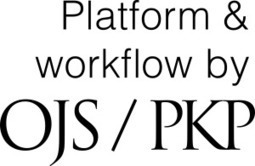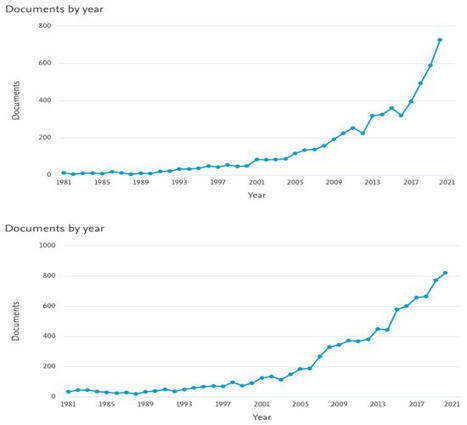 Your new post is loading...
 Your new post is loading...
Introduction: Africa does not have enough doctors despite having the highest continental burden of disease. Encouragingly, many new medical schools are opening and have begun to graduate doctors. However, the educational structures, operations, and policies of these schools remain poorly understood. This study aimed to better understand these dimensions of new medical schools on the continent.
Methodology: We developed and implemented an online survey covering topics that included admissions policies, curricular design, assessment, accreditation, faculty development, research capacity, postgraduate training, and COVID-19-specific challenges. The survey was sent to 130 schools of which 52 represented individually identifiable email addresses (the remainder being schools’ websites or generic addresses).
Results: Responses represented 10 countries (response rate ~ 56%). Curricula were mostly lecture-based (n = 18, 75%). Electronic platforms and information technologies were used by over 75% (n = 18) of schools. More than half have not implemented postgraduate training programs (n = 13, 57%). Most schools had a formal accreditation process (n = 16, 70%), but the source of accreditation varied. The biggest challenge facing schools was financial (n = 20, 87%) followed by faculty/staff recruitment, training, and retention (each n = 15, 65%).
Conclusion: New medical schools in Sub-Saharan Africa are a gateway to the next generation of medical doctors in a region where medical professionals are desperately needed. This survey of new schools is an important step in better understanding their status and needs, especially with the onset of the pandemic.
Abstract
COVID-19 has brought with it a global crisis, but it also highlighted many important take-home messages to educators that are worth considering and implementing for better future medical education. We highlight 5 of these messages; (1) redefining of what considered being a core in training, (2) better to be prepared for the future challenges of online learning, (3) re-envision faculty development practices, (4) attention shift from stethoscope to microscope, (5) extra-curricular scientific activities should not lag.
Short overview of pan-Canadian initiatives related to public health training capacity since the early 2000s
According to information gathered, in the aftermath of the Severe Acute Respiratory Syndrome (SARS) outbreak in 2003, the National Advisory Committee on SARS and Public Health (Naylor Committee) reported that a thorough review of public health training programs was needed and that new entrants to the public health workforce would have to be appropriately qualified (Naylor & National Advisory Committee on SARS and Public Health, 2003). Following recommendations from this committee, the Pan-Canadian Public Health Network (Public Health Network), a key intergovernmental mechanism for public health collaboration was created (Pan-Canadian Public Health Network, 2008). Through its various activities, the Public Health Network Council (part of the Pan-Canadian Public Health Network) oversaw the implementation of actions recommended in the report Building a Public Health Workforce for the 21st Century – A Pan-Canadian Framework for Public Health Human Resources Planning (Joint Task Group on Public Health Human Resources, 2005), among which were those targeting a better understanding of public health training capacities in Canadian universities.
Highlights of the 2022 data collection on public health programs offered in Canadian universities
Our 2022 data collection provides information on the location of Canadian universities offering public health programs, the types of programs and degrees they lead to, and the number of students enrolled in and graduated from these programs during the period 2017 to 2021. So, the purpose of the 2022 data collection, the detailed results of which are presented in section 4, may be seen as an initial step towards a better understanding of the current public health training capacity in Canadian universities.
Proposed actions to complement the current understanding of Canadian universities’ public health training capacity
In order to complement the information on the supply of public health-related programs offered by Canadian universities, it would be appropriate to:
Maintain a comprehensive list of all public health academic programs offered by Canadian universities by identifying and classifying titles of all public health-related programs offered (less or more than 30 credits, continuing or professional education training programs) with a particular focus on program titles that include terms such as global health, environmental health, Indigenous health, Aboriginal health, vulnerable population health, health impact, occupational health, but which do not contain or are not directly associated with public health, population or community health, health promotion, epidemiology, etc.
In order to better understand the diversity of undergraduate and graduate programs related to public health offered by Canadian universities, it would be appropriate to:
Review the curricula, terms and conditions of bachelor’s, master’s, doctoral, medical residencies and other academic training programs related to public health that are offered by Canadian universities.
In order to learn about the employment niches of university students graduating from public health programs, it would be appropriate to:
Continue routinely collecting data on students enrolled in and graduating from university public health programs in Canada, in order to have information on the programs and a breakdown of students by program;
Collect data on the employment pathways of graduating students in these programs for a minimum of 5 years after graduation, using compatible methodologies.
In order to maintain a knowledge base on the composition, mix and distribution of Canadian universities’ public health training capacity at the provincial and territorial levels, it would be appropriate to:
Continue collecting data on students enrolled in and graduating from university public health programs in Canada, according to the provinces or federal territories of the universities offering these programs.
Scope of the project
In this project, we:
Present an overview of initiatives implemented since the early 2000s which contributed to our understanding of the training capacity of university-based public health programs in Canada;
Produce relevant, current data on the supply of public health programs offered in Canadian universities in 2022 and on students enrolled in and graduated from these programs in 2017, 2020 and 2021;
Propose actions for collecting additional data on the supply of university public health programs to better understand public health training capacity in Canada;
Recognize that information on academic public health training program capacity is only one of the essential components to inform workforce development planning and workforce capacity strengthening;
Recognize that there is a need to identify the full range of questions and information to comprehensively inform public health workforce development planning and workforce capacity strengthening.
Background: Competency based medical education (CBME) relies on supervisor narrative comments contained within entrustable professional activities (EPA) for programmatic assessment, but the quality of these supervisor comments is unassessed. There is validity evidence supporting the QuAL (Quality of Assessment for Learning) score for rating the usefulness of short narrative comments in direct observation.
Objective: We sought to establish validity evidence for the QuAL score to rate the quality of supervisor narrative comments contained within an EPA by surveying the key end-users of EPA narrative comments: residents, academic advisors, and competence committee members.
Methods: In 2020, the authors randomly selected 52 de-identified narrative comments from two emergency medicine EPA databases using purposeful sampling. Six collaborators (two residents, two academic advisors, and two competence committee members) were recruited from each of four EM Residency Programs (Saskatchewan, McMaster, Ottawa, and Calgary) to rate these comments with a utility score and the QuAL score. Correlation between utility and QuAL score were calculated using Pearson’s correlation coefficient. Sources of variance and reliability were calculated using a generalizability study.
Results: All collaborators (n = 24) completed the full study. The QuAL score had a high positive correlation with the utility score amongst the residents (r = 0.80) and academic advisors (r = 0.75) and a moderately high correlation amongst competence committee members (r = 0.68). The generalizability study found that the major source of variance was the comment indicating the tool performs well across raters.
Conclusion: The QuAL score may serve as an outcome measure for program evaluation of supervisors, and as a resource for faculty development.
Canadian specialist residency training programs are implementing a form of competency-based medical education (CBME) that requires frequent assessments of entrustable professional activities (EPAs). Faculty struggle to provide helpful feedback and assign appropriate entrustment scores. CBME faculty development initiatives rarely incorporate teaching metrics. Dashboards could be used to visualize faculty assessment data to support faculty development.
The Swedish government has changed the university law to ensure every doctoral candidate is made an employee of the university with a salary. This should strengthen the position of foreign PhD students, who make up more than half of the country’s 19,000 doctoral candidates.
|
Medical AI has transformed modern medicine and created a new environment for future doctors. However, medical education has failed to keep pace with these advances, and it is essential to provide systematic education on medical AI to current medical undergraduate and postgraduate students. To address this issue, our study utilized the Unified Theory of Acceptance and Use of Technology model to identify key factors that influence the acceptance and intention to use medical AI. We collected data from 1,243 undergraduate and postgraduate students from 13 universities and 33 hospitals, and 54.3% reported prior experience using medical AI. Our findings indicated that medical postgraduate students have a higher level of awareness in using medical AI than undergraduate students. The intention to use medical AI is positively associated with factors such as performance expectancy, habit, hedonic motivation, and trust. Therefore, future medical education should prioritize promoting students’ performance in training, and courses should be designed to be both easy to learn and engaging, ensuring that students are equipped with the necessary skills to succeed in their future medical careers.
Background
As Ukraine struggles with the education of healthcare professionals due to the war, we aimed to identify the specific effects of the war on medical education, the resulting needs, and the expected consequences for schools, faculty, staff, students, and the healthcare system.
Methods
In October and November 2022, we performed a survey of students, faculty, and staff of medical schools in Ukraine and conducted semi-structured interviews with faculty leaders (i.e., rectors, vice-rectors). We conducted a descriptive analysis of the survey’s closed-ended questions. The survey and the interviews included open-ended questions about war-related restrictions to teaching and learning, resulting needs, and expected consequences, for which we applied a thematic analysis.
Results
We received 239 survey responses (N = 49 faculty and staff, N = 190 students) and conducted nine interviews with faculty leaders across Ukraine. Most survey participants indicated that they had experienced restrictions or changes to their work or study due to the war (86% of faculty and staff, 69% of students). From the thematic analysis of the survey and interviews, we identified eight themes: disruption of teaching, increased workload, mental stress, financial restrictions, non-war related needs, international cooperation, quality of education, and prospects of future professionals. The quality of healthcare education in Ukraine was threatened, and schools, faculty, staff, and students were under great strain. While already established international cooperation has been supportive, some needs have still not been addressed.
Conclusions
We hope that our findings will help researchers and educators from abroad contribute to meeting Ukraine’s needs in medical education.
Training could be shorter, delivered throughout Quebec and make greater use of technology. Will we have the audacity to move forward?
The evidence is striking: Quebec is short of doctors. For the past few years, the faculties of medicine at the universities of Montreal, Laval, McGill and Sherbrooke have been admitting more students in response to the wishes of the Quebec government. But the faculties are in dire straits: they say they do not have the capacity to absorb all these increases year after year. And there is every reason to believe that they are right.
Integrative learning and competency-based education are both evolving as major themes in education. Integrative learning emphasizes that knowledge from different domains and contexts are brought together to enhance the learner’s experience. The emphasis on integrated learning has sparked the development of integrative curriculum, which methodically brings knowledge and skills together in ways that reinforce learning. Competency-based medical education (CBME) is an educational method that assumes integrative learning by relying on defined competencies for learners to master during their education. CBME is an illustration of both integrated learning and integrated curricula. In CBME, learners progress through their program by demonstrating acquisition of competencies, which are often integrative statements in themselves. In integrative learning, the question of how to assess a learner’s progress through their program remains a challenge. Entrustable Professional Activities (EPAs) are one tool utilized to assess learning in CBME. EPAs are defined, observable tasks that learners should be able to demonstrate upon entering their profession. Understanding EPAs and how they are used in CBME may provide a framework for assessing integrative learning in diverse educational contexts.
For its ability to enable a student-centered, active learning experience delivered at minimum cost, we encourage individual instructors and African medical schools at large, to adopt TBL as a complementary strategy towards realizing the goal of training Africa’s fit-for-purpose doctor.
|
 Your new post is loading...
Your new post is loading...
 Your new post is loading...
Your new post is loading...



















